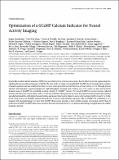| dc.contributor.author | Akerboom, J. | |
| dc.contributor.author | Chen, T.-W. | |
| dc.contributor.author | Wardill, T. J. | |
| dc.contributor.author | Tian, L. | |
| dc.contributor.author | Marvin, J. S. | |
| dc.contributor.author | Mutlu, S. | |
| dc.contributor.author | Calderon, N. C. | |
| dc.contributor.author | Esposti, F. | |
| dc.contributor.author | Borghuis, B. G. | |
| dc.contributor.author | Sun, X. R. | |
| dc.contributor.author | Gordus, A. | |
| dc.contributor.author | Orger, M. B. | |
| dc.contributor.author | Portugues, Ruben | |
| dc.contributor.author | Engert, Florian | |
| dc.contributor.author | Macklin, J. J. | |
| dc.contributor.author | Filosa, A. | |
| dc.contributor.author | Aggarwal, A. | |
| dc.contributor.author | Kerr, R. A. | |
| dc.contributor.author | Takagi, R. | |
| dc.contributor.author | Kracun, S. | |
| dc.contributor.author | Shigetomi, E. | |
| dc.contributor.author | Khakh, B. S. | |
| dc.contributor.author | Baier, H. | |
| dc.contributor.author | Lagnado, L. | |
| dc.contributor.author | Wang, S. S.- H. | |
| dc.contributor.author | Bargmann, C. I. | |
| dc.contributor.author | Kimmel, B. E. | |
| dc.contributor.author | Jayaraman, V. | |
| dc.contributor.author | Svoboda, K. | |
| dc.contributor.author | Kim, D. S. | |
| dc.contributor.author | Schreiter, E. R. | |
| dc.contributor.author | Looger, L. L. | |
| dc.date.accessioned | 2013-11-13T14:55:22Z | |
| dc.date.issued | 2012 | |
| dc.identifier | Quick submit: 2013-07-09T11:11:15-04:00 | |
| dc.identifier.citation | Akerboom, Jasper, Tsai-Wen Chen, Trevor J. Wardill, Lin Tian, Jonathan S. Marvin, Sevinç Mutlu, Nicole Carreras Calderon, et al. 2012. Optimization of a GCaMP calcium indicator for neural activity imaging. Journal of Neuroscience 32(40): 13819-13840. | en_US |
| dc.identifier.issn | 0270-6474 | en_US |
| dc.identifier.uri | http://nrs.harvard.edu/urn-3:HUL.InstRepos:11315420 | |
| dc.description.abstract | Genetically encoded calcium indicators (GECIs) are powerful tools for systems neuroscience. Recent efforts in protein engineering have significantly increased the performance of GECIs. The state-of-the art single-wavelength GECI, GCaMP3, has been deployed in a number of model organisms and can reliably detect three or more action potentials in short bursts in several systems in vivo. Through protein structure determination, targeted mutagenesis, high-throughput screening, and a battery of in vitro assays, we have increased the dynamic range of GCaMP3 by severalfold, creating a family of “GCaMP5” sensors. We tested GCaMP5s in several systems: cultured neurons and astrocytes, mouse retina, and in vivo in Caenorhabditis chemosensory neurons, Drosophila larval neuromuscular junction and adult antennal lobe, zebrafish retina and tectum, and mouse visual cortex. Signal-to-noise ratio was improved by at least 2- to 3-fold. In the visual cortex, two GCaMP5 variants detected twice as many visual stimulus-responsive cells as GCaMP3. By combining in vivo imaging with electrophysiology we show that GCaMP5 fluorescence provides a more reliable measure of neuronal activity than its predecessor GCaMP3. GCaMP5 allows more sensitive detection of neural activity in vivo and may find widespread applications for cellular imaging in general. | en_US |
| dc.description.sponsorship | Molecular and Cellular Biology | en_US |
| dc.language.iso | en_US | en_US |
| dc.publisher | Society for Neuroscience | en_US |
| dc.relation.isversionof | doi:10.1523/JNEUROSCI.2601-12.2012 | en_US |
| dc.relation.hasversion | https://darchive.mblwhoilibrary.org/handle/1912/5448 | en_US |
| dash.license | LAA | |
| dc.title | Optimization of a GCaMP Calcium Indicator for Neural Activity Imaging | en_US |
| dc.type | Journal Article | en_US |
| dc.date.updated | 2013-07-09T15:11:43Z | |
| dc.description.version | Version of Record | en_US |
| dc.rights.holder | J Akerboom, TW Chen, TJ Wardill, L Tian, JS Marvin, S Mutlu, NC Calderon, F Esposti, BG Borghuis, XR Sun, A Gordus, MB Orger, R | |
| dc.relation.journal | Journal of Neuroscience | en_US |
| dash.depositing.author | Engert, Florian | |
| dc.date.available | 2013-11-13T14:55:22Z | |
| dc.identifier.doi | 10.1523/JNEUROSCI.2601-12.2012 | * |
| dash.authorsordered | false | |
| dash.contributor.affiliated | Portugues, Ruben | |
| dash.contributor.affiliated | Engert, Florian | |


